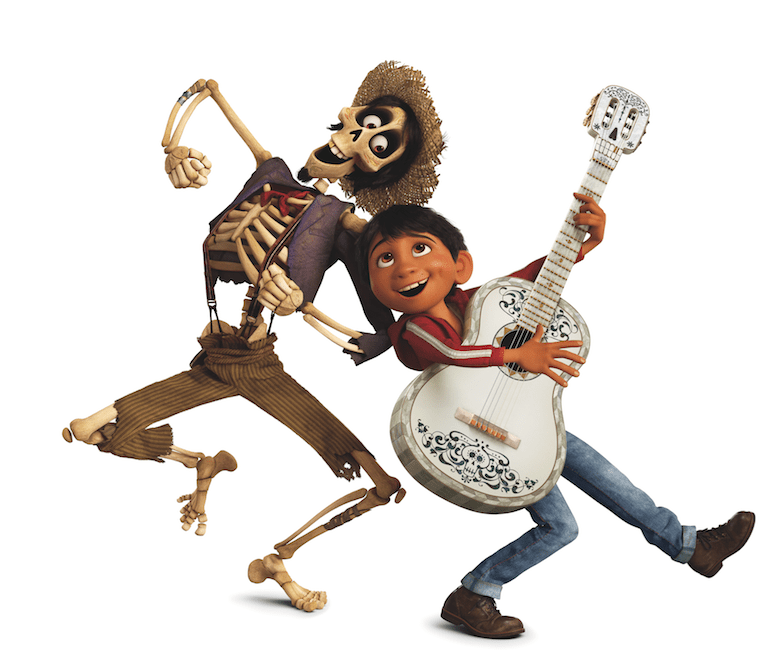Disney animation used to specialize in anthropomorphized animals and fairy tale princesses, but starting around the time Pixar began dominating the cartoon universe, the realities of non-white, non-European cultures began to take root: Mulan, Lilo & Stitch, The Princess and the Frog, Moana, Zootopia — they all showed the world in all its colors.
And few worlds have been more colorful than Coco — Pixar’s 17th feature and Disney’s 60th. Set in Mexico during Dia de los Muertos — the traditional Day of the Dead, when the spirits of departed loved one return to visit their living relatives on earth — it’s a pinata exploding with papels picador, sugar skulls, mariachi charro outfits and candy-colored flowers. But our hero, 10-year-old Miguel, is not happy. His family forbids the playing of music in the house, because late, great-great-grandmama Imelda was abandoned by her husband, a troubadour, 90 years ago; Miguel’s aged great-grandma, Coco, was only a girl when she was left, but the ban has remained.
 That troubles Miguel, who longs to play music like his hero — the famed Mexican musician Ernesto de la Cruz, who died tragically 75 years ago, but who is still revered. Could it be that Miguel’s love for music is in his blood? Might he be destined to make music, if only his family can come out of their regressive ways?
That troubles Miguel, who longs to play music like his hero — the famed Mexican musician Ernesto de la Cruz, who died tragically 75 years ago, but who is still revered. Could it be that Miguel’s love for music is in his blood? Might he be destined to make music, if only his family can come out of their regressive ways?
The plot is as old as The Jazz Singer: The kid who defies his parents to pursue his artistic mission. But the rhythms of tropical, the tempo lively, the music not jazz but Spanish ballads. Combine that with the mysticism of the underworld where the dead wander among us — Miguel somehow crosses over, and needs the help of his departed relatives, maybe even the superstar-even-in-the-afterlife Ernesto de la Cruz, to get back and realize his dream.
When you boil it down to its constituent parts like that, Coco sounds a bit staid. a bit programmatic, but it’s anything but. Yes, there is a lovable dog, a menacing Javert (a spirit animal that looks like a Day-Glo griffin), a lesson, a realization, a friendship, a twist, a tear … but it comes from unexpected places. First there is the magical world of the dead, a brightly-lit city of happy skeletons looking forward to every Nov. 1 when they can visit the living. Then there is a turn in the plot — including the presence of death that is treated not as scary but as inevitable if sad — that makes it appropriate for most ages without becoming maudlin. And there is the beautiful music (look for “Remember Me” on the Oscar shortlist) and touching denouement. If Coraline and Inside Out had a baby movie, it might look like Coco. And we’d be all the better for it.
— Arnold Wayne Jones
Opens Wednesday.











